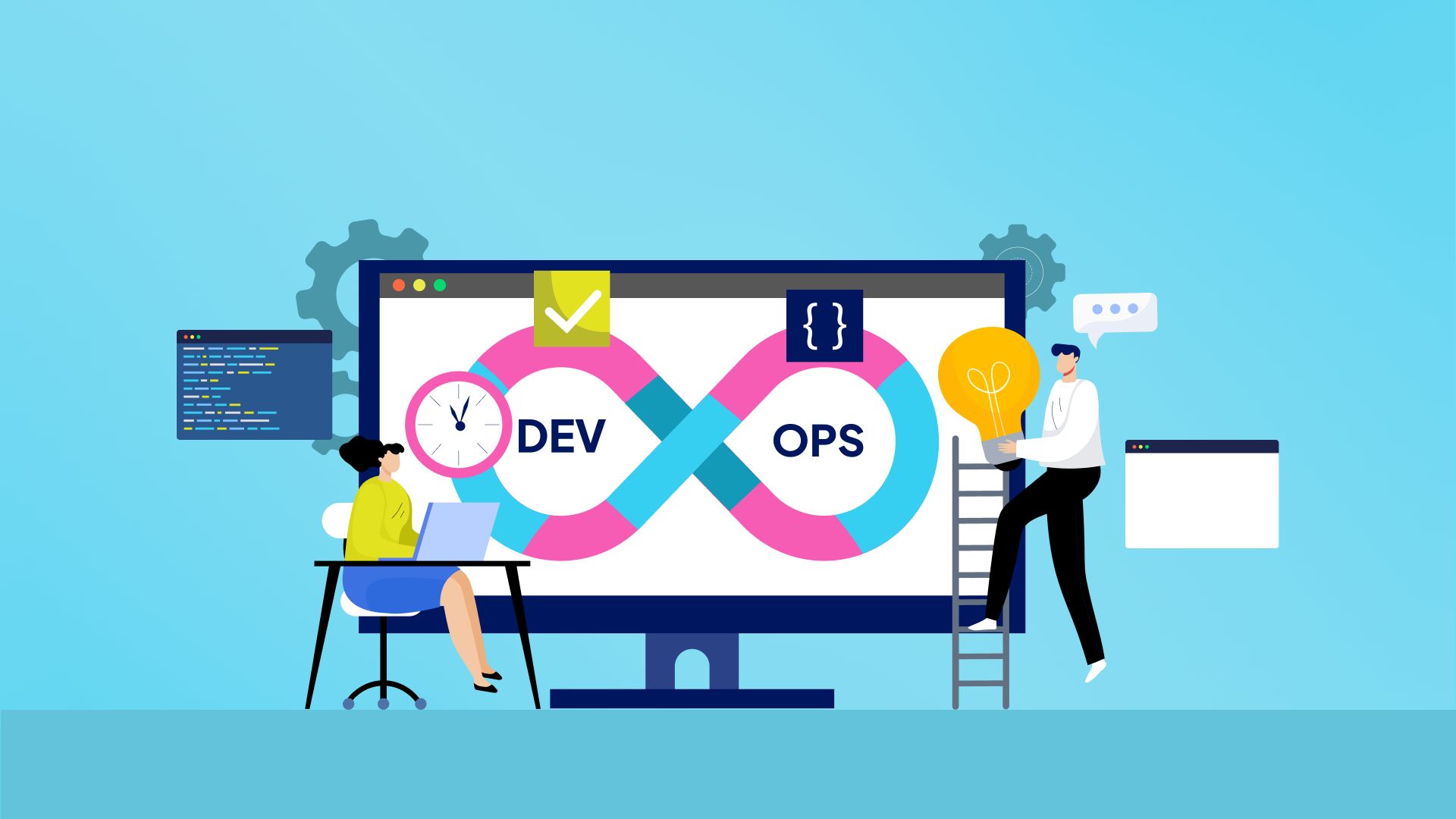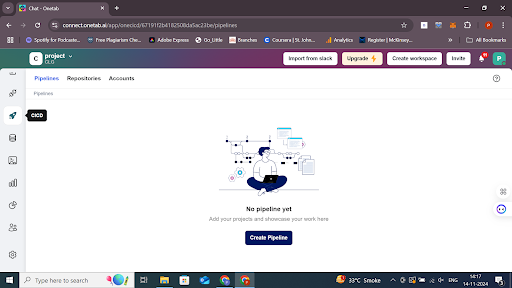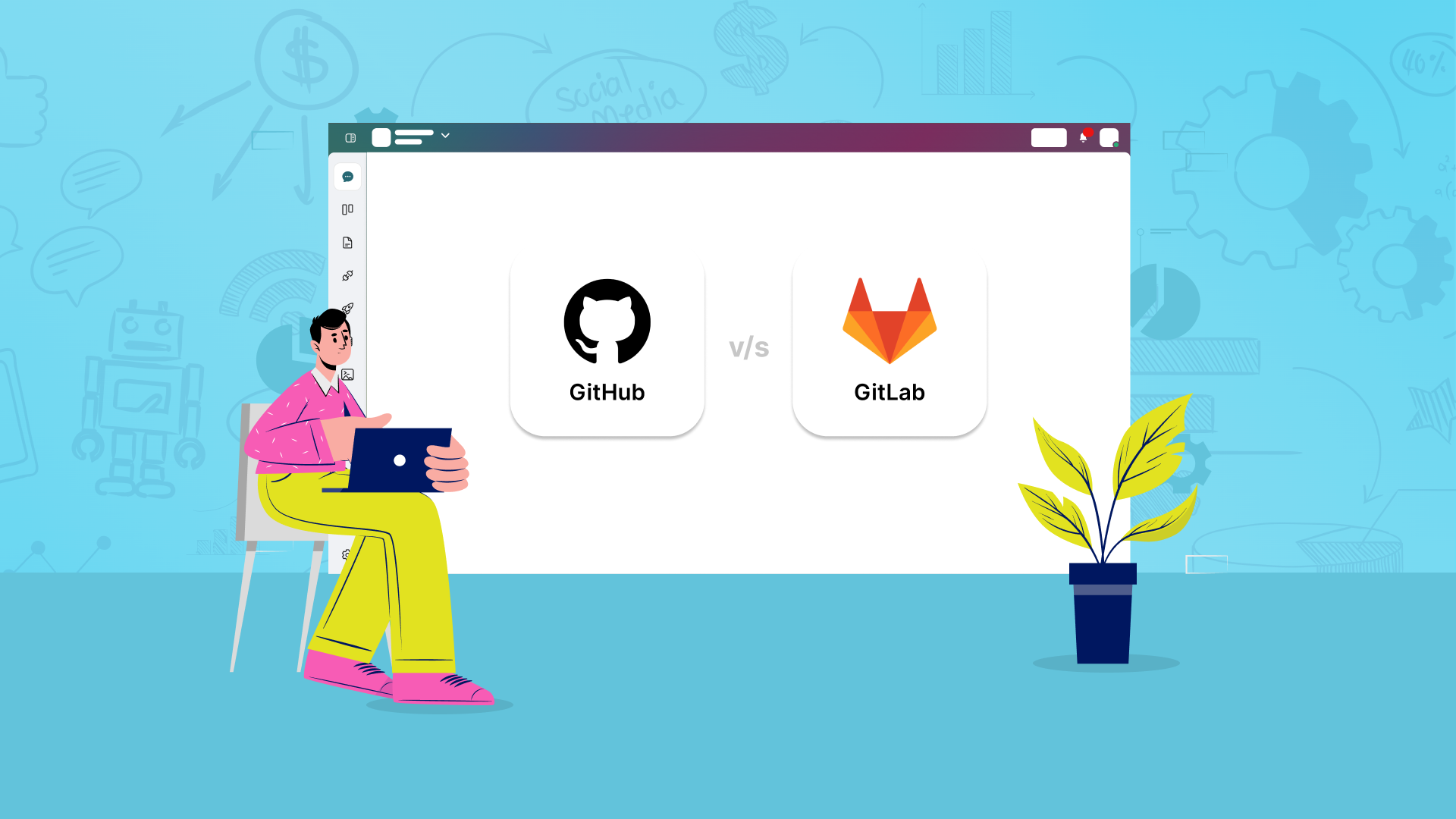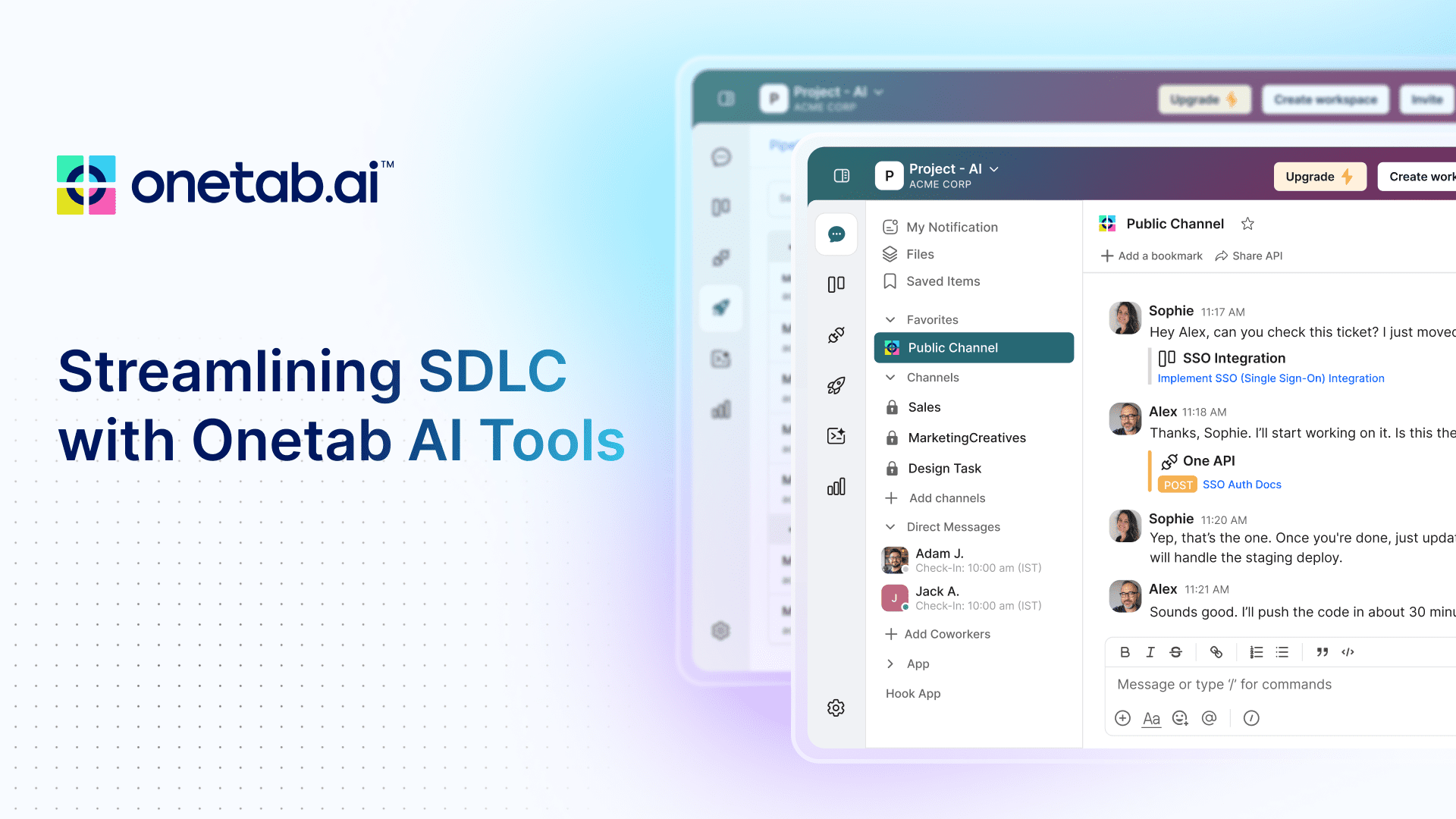Understanding DevOps: From Fundamentals to Implementation
The pressure to deliver high-quality software faster is greater than ever. As businesses aim to stay competitive, streamlining processes becomes crucial.
This is where DevOps makes a huge difference; the meaning of devOps is not just a buzzword but a powerful method that bridges the gap between software development (Dev) and IT operations (Ops).
Instead of treating DevOps as a set of tools, think of it as a mindset shift that encourages teams to collaborate closely, break down traditional silos, and consistently deliver value to users.
The end goal? To ensure that software gets out the door faster, with fewer bugs, and with everyone working together seamlessly.
Optimize, Automate, Collaborate
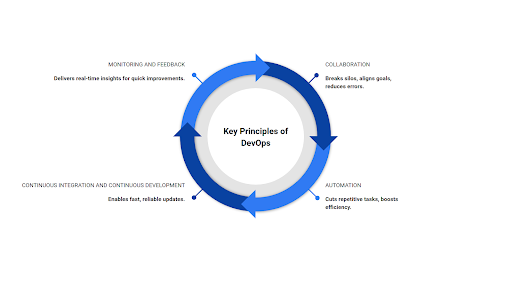
Key principles of DevOps
1. Collaboration
DevOps thrives on breaking down silos between development and operations teams. By fostering cross-functional collaboration, teams can work toward shared objectives, creating a continuous feedback loop. This improves communication and accelerates problem-solving, ensuring that both the development and operational sides are aligned in achieving project goals.
For instance, a tech startup implemented weekly cross-department meetings, enhancing communication and reducing deployment errors by 30%. This showcases how collaboration leads to tangible improvements in performance.
While collaboration lays the foundation, automation powers DevOps by reducing human errors and increasing efficiency.
2. Automation
By automating repetitive tasks such as testing, deployment, and monitoring, teams can accelerate processes and minimize the chance of errors. This frees up valuable time for teams to focus on critical tasks requiring human creativity and strategic thinking. With collaboration and automation in place, DevOps takes things further by adopting CI/CD for seamless integration and deployment.
| Pro Tip: Leverage automation tools for testing and deployment to save time and ensure consistent and reliable releases. |
3. Continuous Integration and Continuous Deployment (CI/CD)
CI/CD forms the backbone of an effective DevOps pipeline. It ensures that code changes are continuously tested and deployed, allowing teams to catch bugs early and release new features swiftly. Meanwhile, Continuous Deployment automates the release of validated code to production environments, allowing teams to deliver updates swiftly and reliably.
Power Up Your Pipeline
However, a successful release is just the beginning. Monitoring the system’s performance ensures continuous improvement.
4. Monitoring and Feedback
DevOps emphasizes continuous monitoring of applications post-deployment. Real-time insights from user feedback and performance metrics enable teams to resolve issues quickly, adapt to changing requirements, and improve future releases.
Track and Monitor Active Members’ Progress
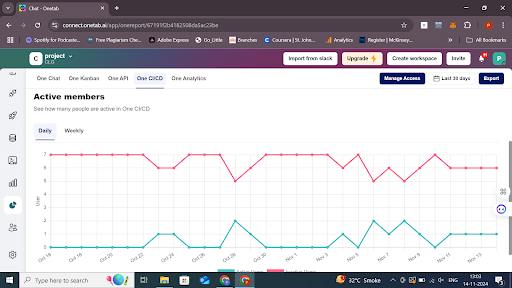
Now that we’ve covered the core principles, let’s examine how DevOps works by walking through its lifecycle.
The DevOps Lifecycle: How It Works
Exploring DevOps’s lifecycle is essential to truly understanding how it transforms workflows. This sequence outlines how teams plan, develop, test, deploy, and continuously improve software.
1. Set goals for successful devOps Implementation with planning
Everything begins with a solid plan. Teams set project goals, gather requirements, and allocate resources. During this phase, tools like onetab can streamline task organization and ensure alignment across the board. Effective planning ensures everyone is on the same page before moving forward. Once the plan is in place, development starts, focusing on rapid iteration and continuous integration.
2. Development
In this phase, developers write code, frequently committing it to a shared repository. The aim is to catch bugs early by integrating code as soon as it’s ready. The collaborative environment encourages feedback and early detection of issues, enabling smoother progress in later stages. After development, the next critical phase is testing.
3. Testing
Testing in DevOps is heavily automated. Continuous testing validates every code change, ensuring potential problems are identified as early as possible. This step significantly reduces the time spent fixing bugs, leading to faster and more reliable releases. Companies implementing automated testing cycles have seen a 50% reduction in critical bugs, enhancing overall software quality. With testing complete, it’s time for deployment.
4. Deployment
Deploying to production environments no longer requires manual intervention. Thanks to automated deployment pipelines, code changes that pass all tests are pushed directly to live environments. Continuous deployment ensures that users can always access the latest features without downtime. Even though deployment might feel like the end, monitoring post-deployment performance is crucial for long-term success.
5. Monitoring
Monitoring doesn’t stop once the software is live. Tools continuously track application performance, user behavior, and system health. This real-time data allows teams to address issues proactively and adapt based on user needs. This brings us to the final and ongoing step—feedback and improvement.
6. Feedback and Improvement
Once the software is deployed and monitored, feedback is collected and analyzed. This constant feedback loop drives continuous improvement, refining the product and the processes behind its development. It’s essential to the DevOps approach to ensure the product stays aligned with user needs and business goals.
Integrate, Deploy, Monitor, Improve!
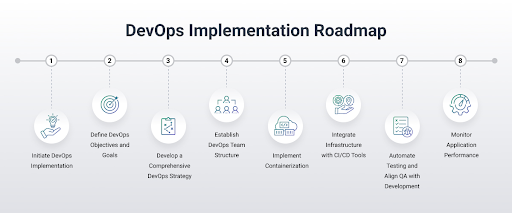
Why DevOps Matters
Implementing DevOps is not just about speeding up software releases; it offers a host of benefits that resonate with businesses of all sizes:
1. Faster Time to Market
By automating workflows and improving collaboration, DevOps enables teams to release new features more quickly, allowing businesses to respond swiftly to market demands.
2. Improved Quality
Continuous testing and feedback loops ensure that the software is robust and reliable. Bugs are caught early, reducing downtime and improving user satisfaction.
3. Increased Efficiency
Automation minimizes manual intervention in repetitive tasks, allowing teams to focus on higher-level activities such as innovation and problem-solving.
4. Scalability
DevOps practices scale effortlessly with business growth. DevOps provides a flexible and scalable solution, whether you’re releasing features for a few users or millions.
5. Enhanced Security
Incorporating security practices early in the development pipeline (often called DevSecOps) ensures vulnerabilities are identified and mitigated before they become more significant. This integrated approach to security helps reduce risks and improve compliance.
Embracing the future with DevOps
DevOps is more than just a technical approach; it’s a cultural shift that empowers teams to collaborate, automate, and continuously improve. By implementing DevOps, organizations can deliver software that meets users’ needs faster, more reliably, and with enhanced security.
For those looking to improve their DevOps journey, platforms like onetab provide the project management support necessary for success. Consider exploring specific tools and resources to deepen your understanding and enhance your implementation of DevOps practices.
